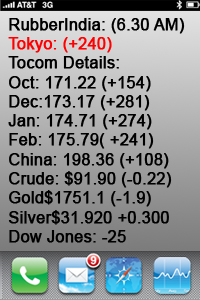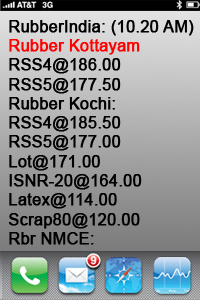December 17, 2025

The 1 kg rubber price in Kerala today is showing a slightly positive trend, supported by higher international rubber futures and firm crude oil prices. However, gains remain limited due to currency movements and seasonal factors.
International Market Influence
Rubber futures in major global markets moved higher today. Prices on the Osaka Exchange, Shanghai Futures Exchange, and Singapore Exchange all recorded gains. Rising crude oil prices and expectations of tight supply are helping to support rubber prices.
Currency Impact
The Japanese yen has strengthened against the US dollar. A stronger yen makes Japanese rubber costlier for overseas buyers, which can slow down export demand and indirectly affect global rubber prices, including Kerala markets.
Supply Situation
Global rubber supply growth is expected to remain weak in the coming year. Low new plantings in Thailand and other rubber-producing countries, along with reduced production in Indonesia due to a shift toward oil palm and fruit cultivation, may tighten supply further.
Weather Effect
Heavy rainfall is forecast in Thailand, which could temporarily disrupt rubber tapping. While most producing countries are still in their peak season, supply is expected to improve after the rainy period ends and tapping resumes fully.
Market Trend
With the holiday season approaching, many traders are opting for short-term or day trading. This may cause minor price fluctuations in the 1 kg rubber price in Kerala today over the short term.
Conclusion
The 1 kg rubber price in Kerala today is supported by firm international markets and supply concerns. However, currency strength and seasonal trading activity may limit sharp price increases. Farmers and traders are advised to closely watch global price movements, weather updates, and currency trends.












